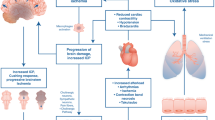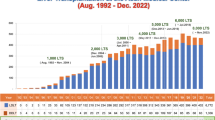Abstract
The purpose of this study was to assess regional variability in access to pediatric liver transplantation. The study population included all pediatric patients (age less than 18 years) listed for liver transplanta-tion in the United Network for Organ Sharing (UNOS) database between 1988 and 2004. The effect of region on waiting list survival, the proportion of patients transplanted, and the proportion of patients remaining on the list was determined using Kaplan-Meier and Cox proportional hazard methods. The proportion of technical variant grafts used was compared between regions using chi-square analysis. Kaplan-Meier analyses showed significant effects of region on survival on the waiting list, transplanta-tion, and remaining on the list (all log-rank P < 0.001). Cox proportional hazard models demonstrated that region, urgency status, and listing period exerted independent effects on survival on the waiting list, transplantation, and remaining on the list (all model P < 0.01). Regional variation existed with regard to donor type (P <0.001). Similar to adults, pediatric survival on the waiting list, the proportion of patients transplanted, and the proportion of patients remaining on the waiting list vary considerably within the 11 U.S. regions. Organ procurement organization specific effects and regional differences in utilization of deceased donor split and living donor organs may contribute to this variability.
Similar content being viewed by others
References
www.optn.org. Accessed April 2005.
Ellison MD, Edwards LB, Edwards EB, Barker CF. Geo-graphic differences in access to transplantation in the United States. Transplantation 2003;76(9):1389–1394.
McDiarmid SV. Current status of liver transplantation in children. Pediatr Clin North Am 2003;50(6):1335–1374.
Otte JB, de Ville de Goyet J, Reding R, Lerut J, Sokal E. Pediatric liver transplantation: from the full-size liver graft to reduced, split, and living related liver transplantation. Pediatr Surg Int 1998;13(5-6):308–318.
Emond JC, Heffron TG, Kortz EO, et al. Improved results of living-related liver transplantation with routine applica-tion in a pediatric program. Transplantation 1993;55(4):835–840.
Gibbons RD, Duan N, Meltzer D, et al. Waiting for organ transplantation: results of an analysis by an Institute of Med-icine committee. Biostatistics 2003;4(2):207–222.
Mullen MA, Kohut N, Sam M, Blendis L, Singer PA. Access to adult liver transplantation in Canada: a survey and ethical analysis. CMAJ 1996;154(3):337–342.
Tuttle-Newhall JE, Rutledge R, Johnson M, Fair J. A state-wide, population-based, time series analysis of access to liver transplantation. Transplantation 1997;63(2):255–262.
Miranda B, Canon J, Cuende N, Garrido G, Naya MT, Fernandez-Zincke E. Disparities in access to liver transplan-tation in Spain. Transplantation 2003;76(9):1398–1403.
Brown RS Jr, Lake JR. The survival impact of liver trans-plantation in the MELD era, and the future for organ alloca-tion and distribution. Am J Transplant 2005;5(2):203–204.
Luskin RS, Buckley CA, Bradley JW, O’Connor KJ, Delmonico FL. An alternative approach to evaluating organ procurement organization performance. Transplant Proc 1999;31(1-2):353–355.
Freeman RB, Harper AM, Edwards EB. Redrawing organ distribution boundaries: results of a computer-simulated analysis for liver transplantation. Liver Transpl 2002;8(8):659–666.
Stahl JE, Kong N, Shechter SM, Schaefer AJ, Roberts MS. A methodological framework for optimally reorganizing liver transplant regions. Med Decis Making 2005;25(1):35–46.
Ubel PA, Caplan AL. Geographic favoritism in liver trans-plantation-unfortunate or unfair? N Engl J Med 1998; 339(18):1322–1325.
Author information
Authors and Affiliations
Corresponding author
Additional information
Supported in part by Health Resources and Services Administration contract 231-00-0115. The content is the responsibility of the authors alone and does not necessarily reflect the views or policies of the Department of Health and Human Services, nor does mention of trade names, commercial products, or organizations imply endorsement by the U.S. Government.
Rights and permissions
About this article
Cite this article
Austin, M.T., Feurer, I.D. & Pinson, C.W. Access to pediatric liver transplantation: Does regional variation play a role?. J Gastrointest Surg 10, 387–394 (2006). https://doi.org/10.1016/j.gassur.2005.10.008
Issue Date:
DOI: https://doi.org/10.1016/j.gassur.2005.10.008




